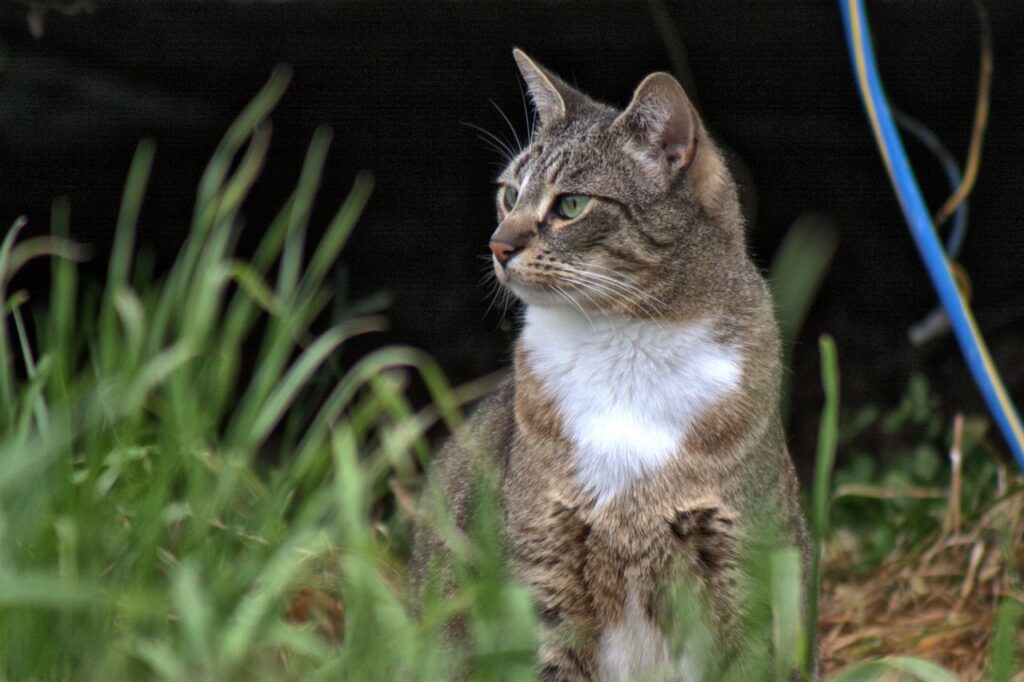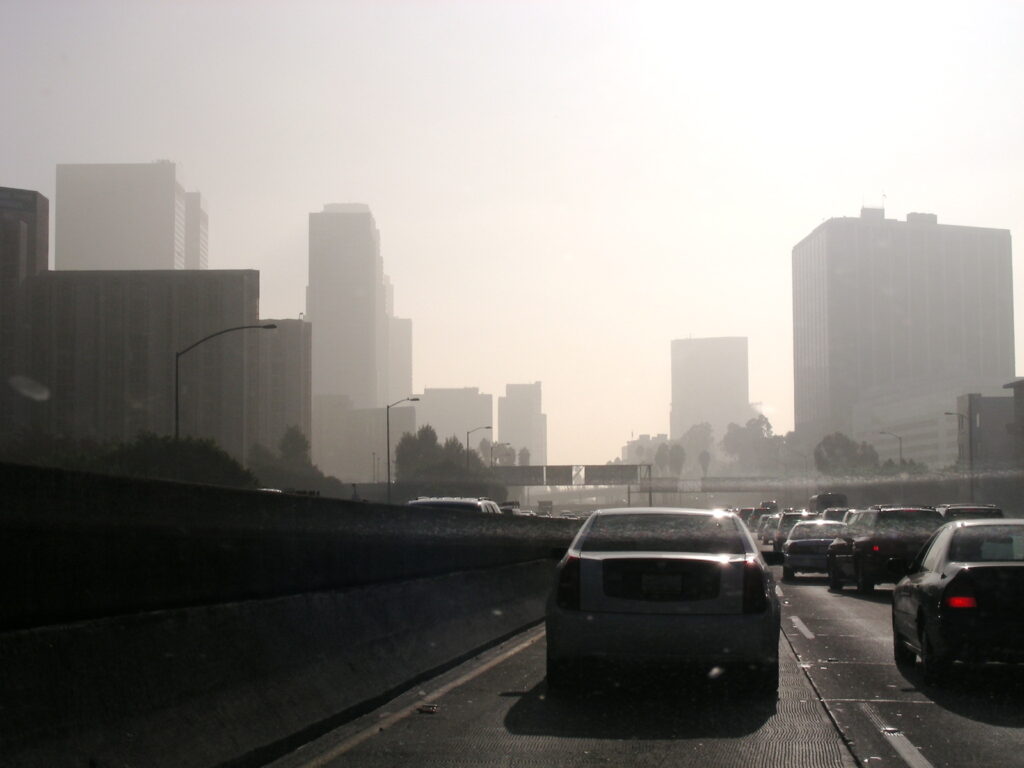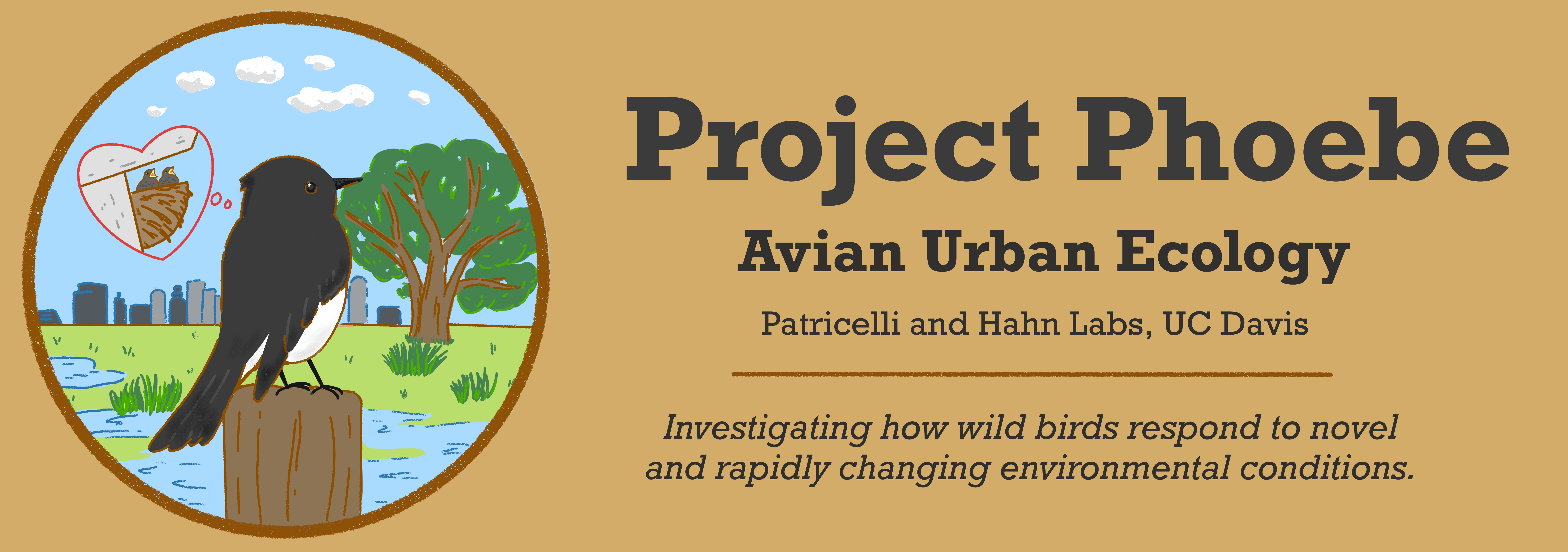What We Hope to Learn
Urbanization is a major threat to biodiversity and is occurring at an ever-growing rate.1 Wildlife living in urban environments experience different conditions than those in rural or natural environments, including higher temperatures, different types and numbers of predators, and higher concentrations of chemical pollutants.2-3 Although these urban conditions pose challenges to wildlife, some species persist and even thrive in cities.3 Behavior is the front line of an animal’s response to its environment. To understand how animals respond to urbanization, it is essential to explore how their behavior changes in cities, and whether these behavioral changes help them successfully survive and raise their young.4



Project Phoebe aims to contribute to our understanding of how features of cities affect animal behavior and reproduction, using the Black Phoebe, a small, insect-eating songbird, as a model system. We seek to answer the following questions.
- How does reproductive success (e.g., nestling growth, number of fledglings) and survival of Black Phoebes vary with urbanization?
- Which habitat features, such as temperature, exposure to chemical pollutants, or predator activity, affect Phoebe reproductive success and survival?
- Do the behavioral, physiological, and morphological traits of Phoebes vary with urbanization, and how do these traits affect their success across habitats? In other words, do changes in these traits allow Phoebes to better cope with city life?
Project Phoebe consists of many sub-projects addressing various aspects of these three questions, led by graduate students and by various undergraduate team members. Our work includes locating Black Phoebe nests in urban parks and nature preserves, tracking nesting attempts, and measuring Phoebe behavior in a variety of situations, including how much time they spend taking care of their nestlings and how they respond to use checking their nests. We also characterize features of the habitat around each nest, record predator sightings, and continuously monitor temperature near all nests. Finally, we take small samples of mud from each Phoebe nest (Phoebe build cup-shaped nests out of mud and grass), which will allow us to explore whether Phoebes use different materials to build their nests in urban and non-urban habitats and whether nest design affect their success. This investigation of nest design is the result of a collaboration with Professor Alejandro Martinez Vela and Riya Anilkumar in the UC Davis Civil and Environmental Engineering department, as well as Professor Matt Kirby CSU Fullerton.
Our research will provide insight into how different aspects of the urban environment (e.g., high temperatures, exposure to predators, habitat characteristics) limit or promote the persistence of birds in cities. If we can understand the factors governing the Black Phoebe’s ability to survive and reproduce in cities, we may be able to use this information to improve urban quality of life for native birds and to understand why other species (such as closely related flycatchers) may be struggling to adapt. Additionally, our investigation of interactions between urbanization and heat will provide key insight into how the combination of multiple forms of global change—urbanization and climate change—will affect birds and will thus help inform conservation and management of birds in an increasingly human-modified world.
References
- Seto KC, Güneralp B, Hutyra LR. Global forecasts of urban expansion to 2030 and direct impacts on biodiversity and carbon pools. Proceedings of the National Academy of Sciences. 2012 Oct 2;109(40):16083–8.
- Grimm NB, Faeth SH, Golubiewski NE, Redman CL, Wu J, Bai X, et al. Global Change and the Ecology of Cities. Science. 2008 Feb 8;319(5864):756–60.
- Ouyang JQ, Isaksson C, Schmidt C, Hutton P, Bonier F, Dominoni D. A New Framework for Urban Ecology: An Integration of Proximate and Ultimate Responses to Anthropogenic Change. Integr Comp Biol. 2018 Nov;58(5):915–28.
- Sih A. Understanding variation in behavioural responses to human-induced rapid environmental change: a conceptual overview. Animal Behaviour. 2013 May 1;85(5):1077–88.

